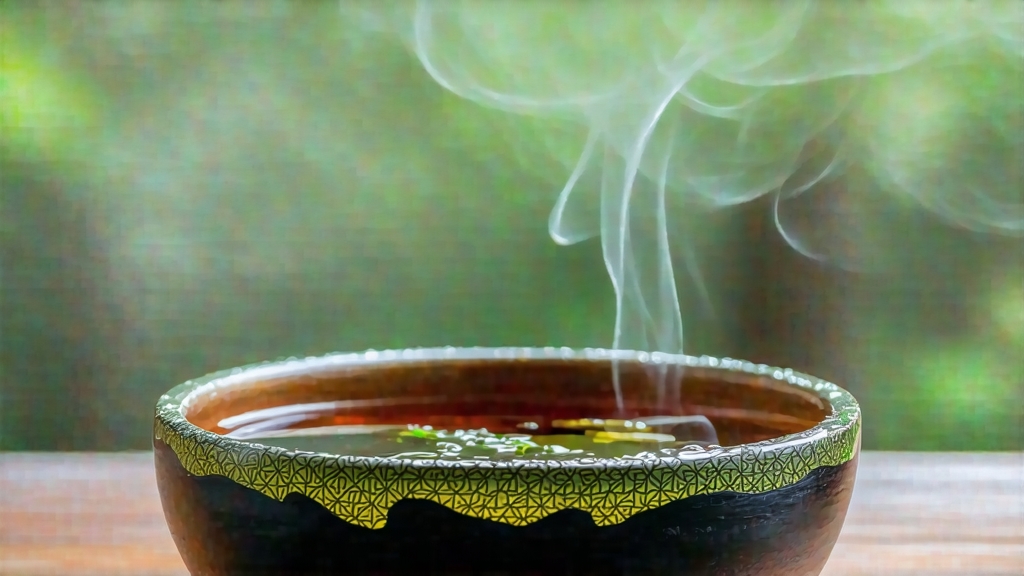
If green tea is spring’s first kiss and black tea winter’s ember, then Tie Guan Yin is the suspended moment of an autumn dawn—half awake, half dreaming. Among the five great families of Chinese oolong, this “Iron Goddess of Mercy” carries the most spellbinding duality: a floral lift that can rival a fine jasmine, anchored by a mineral depth reminiscent of wet granite and warm bamboo. To understand her is to listen to three centuries of Song-dynasty whispers, Qing-era accidents, and modern market revolutions, all rolled into one perfect curl of jade-green leaf rimmed with scarlet.
Origin Myths and Documented History
Villagers in Anxi’s Xiping village still point to Wei Yin’s crumbling shrine, erected in 1736 to thank the goddess Guan Yin for revealing the original cutting in a dream. Academic gazetteers are drier: the cultivar “Hong Xin Guan Yin” (Red-heart Guan Yin) was first tax-recorded in Anxi County during Emperor Qianlong’s reign, prized for its “heavy aroma and rock honey finish.” Both versions agree on one detail—Tie Guan Yin was never mass-planted until the 1915 Panama-Pacific Expo, where it won a gold medal and seduced the diaspora in Southeast Asia, creating the first trans-ocean tea craze long before Instagram latte art.
Terroir: Why Anxi’s Micro-climate Matters
The county sits on the 25th parallel, 300–800 m above sea level, wrapped in morning fog that burns off by ten, giving the leaves a four-hour photosynthetic sprint. Granitic laterite soil, rich in iron and potassium, forces the roots to struggle; struggle equals aromatic complexity. Within Anxi, micro-zones have already achieved Burgundian status: Xiping for “hua xiang” (orchid fragrance), Gande for “ru xiang” (milk aroma), and Xianghua for “yin yun” (lingering mineral echo). Purists will pay 300 % premiums for 800-year-old tree material from the so-called “mother grove” at Yaoyang, even though the county only recognizes 12 officially protected ancient trees.
Cultivar Lineage: Three Brothers and One Cousin
- Hong Xin Guan Yin – the original red-stemmed, purple-budded strain, low yield, highest “yun.”
- Qing Xin (Green-heart) Guan Yin – a 1950s clonal selection, frost-resistant, orchid-forward, now 70 % of acreage.
- Jin Guan Yin – a 1996 cross with Huang Jin Gui, engineered for faster oxidation, mango-honey top notes.
- Fo Shou Guan Yin – a quirky graft onto bergamot-scented Fo Shou rootstock, yielding a citrus-peel finish beloved in Taipei teahouses.
Craft: The 24-Hour Ballet of Oxidation
Pick at 9 a.m. when the dew point drops; two leaves and a half-open bud, 4.5 cm exact. Sun-wither for 20 minutes at 28 °C, leaf loss 7 %—the “soften” stage. Move indoors to conditioned troughs; 8 tosses in a bamboo drum, 5 seconds each, bruising the margins just enough to free catechins. Rest 45 minutes; repeat twice more. By midnight the leaf edge is 30 % oxidized, the center still emerald—partial oxidation’s hallmark. A 220 °C tumble in the killing-green machine locks the aroma, followed by 40 rounds of hot-wrap rolling that twists the leaf into the signature “dragonfly head, frog leg” shape. Charcoal bake three times over 40 days using longan-wood embers at 70 °C, resting 48 hours between each bake. The result: 3 % moisture, 5 % charcoal whisper, 100 % magic.
Modern Styles: From “Green” to “Classic”
In the 1990s Taiwanese merchants wanted a fresher cup; Anxi farmers shortened oxidation to 15 % and skipped charcoal. The new “qing xiang” (light aroma) style explodes with lily and fresh cream, but ages poorly—six months and it fades. Connoisseurs chase the “nong xiang” (traditional roast): deeper oxidation (35 %), three charcoal passes, needing two years to cool before it sings of toasted cashew and temple incense. A third, niche “aged Tie Guan Yin” is re-roasted every